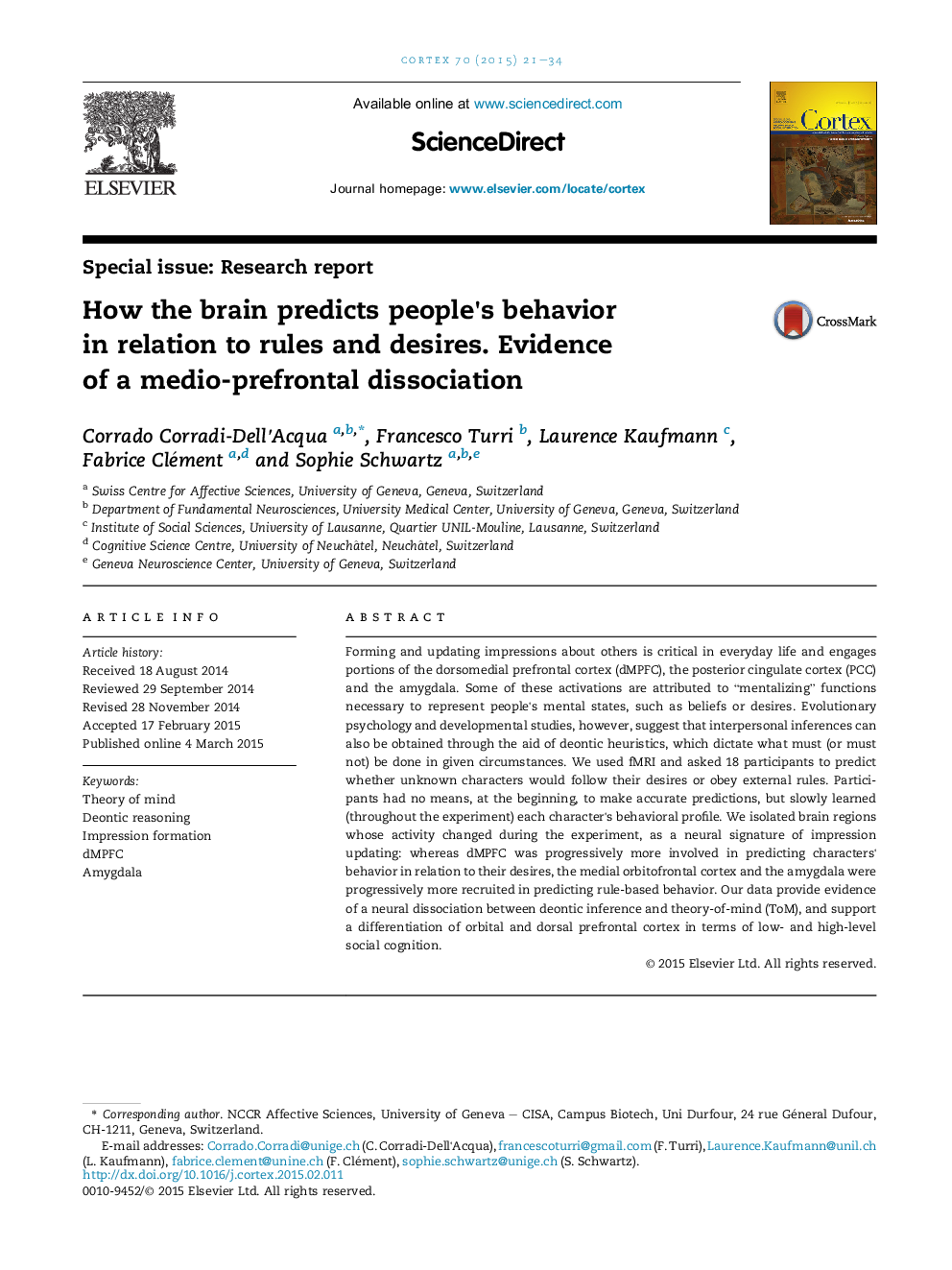| کد مقاله | کد نشریه | سال انتشار | مقاله انگلیسی | نسخه تمام متن |
|---|---|---|---|---|
| 7314012 | 1475462 | 2015 | 14 صفحه PDF | دانلود رایگان |
عنوان انگلیسی مقاله ISI
How the brain predicts people's behavior in relation to rules and desires. Evidence of a medio-prefrontal dissociation
ترجمه فارسی عنوان
چگونه مغز رفتار مردم را در رابطه با قواعد و خواسته ها پیش بینی می کند. شواهد تفکیک مدیو پیشواسطه
دانلود مقاله + سفارش ترجمه
دانلود مقاله ISI انگلیسی
رایگان برای ایرانیان
کلمات کلیدی
موضوعات مرتبط
علوم زیستی و بیوفناوری
علم عصب شناسی
علوم اعصاب رفتاری
چکیده انگلیسی
Forming and updating impressions about others is critical in everyday life and engages portions of the dorsomedial prefrontal cortex (dMPFC), the posterior cingulate cortex (PCC) and the amygdala. Some of these activations are attributed to “mentalizing” functions necessary to represent people's mental states, such as beliefs or desires. Evolutionary psychology and developmental studies, however, suggest that interpersonal inferences can also be obtained through the aid of deontic heuristics, which dictate what must (or must not) be done in given circumstances. We used fMRI and asked 18 participants to predict whether unknown characters would follow their desires or obey external rules. Participants had no means, at the beginning, to make accurate predictions, but slowly learned (throughout the experiment) each character's behavioral profile. We isolated brain regions whose activity changed during the experiment, as a neural signature of impression updating: whereas dMPFC was progressively more involved in predicting characters' behavior in relation to their desires, the medial orbitofrontal cortex and the amygdala were progressively more recruited in predicting rule-based behavior. Our data provide evidence of a neural dissociation between deontic inference and theory-of-mind (ToM), and support a differentiation of orbital and dorsal prefrontal cortex in terms of low- and high-level social cognition.
ناشر
Database: Elsevier - ScienceDirect (ساینس دایرکت)
Journal: Cortex - Volume 70, September 2015, Pages 21-34
Journal: Cortex - Volume 70, September 2015, Pages 21-34
نویسندگان
Corrado Corradi-Dell'Acqua, Francesco Turri, Laurence Kaufmann, Fabrice Clément, Sophie Schwartz,
